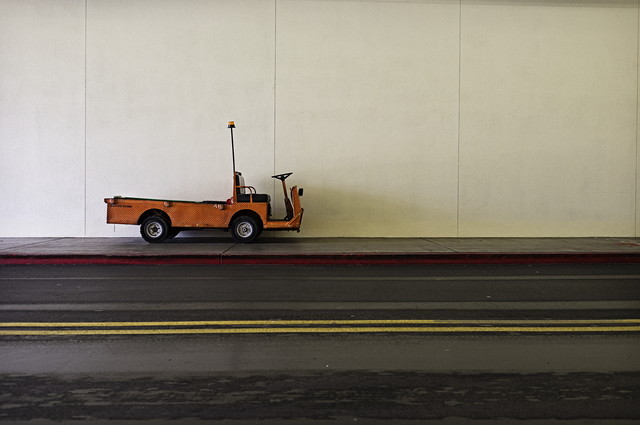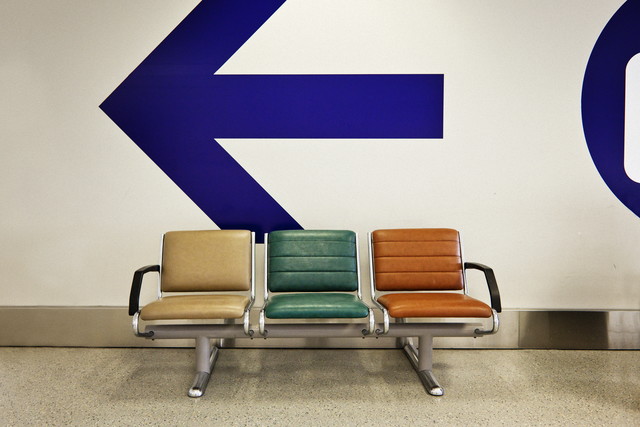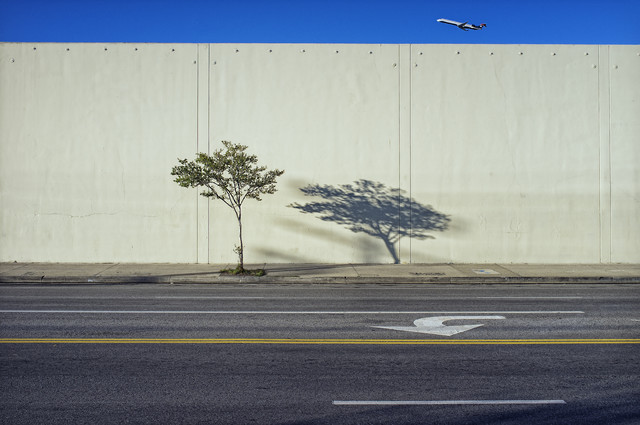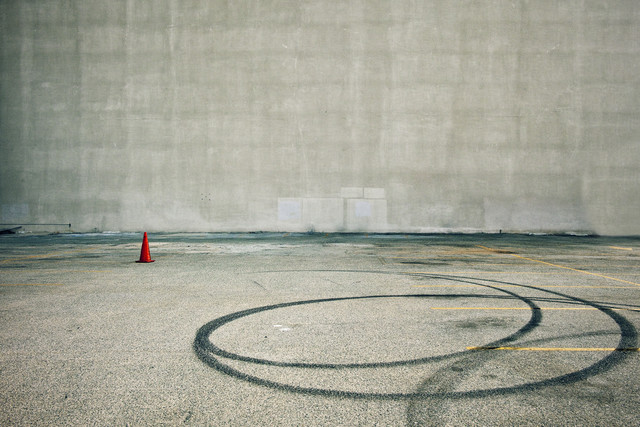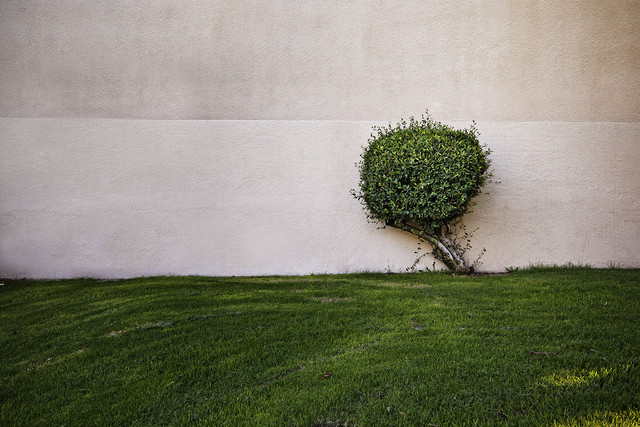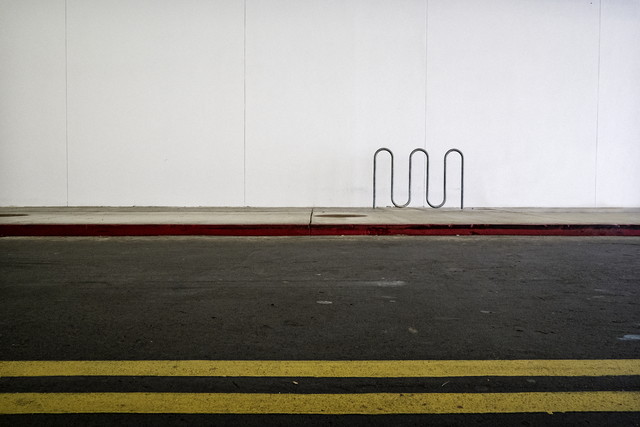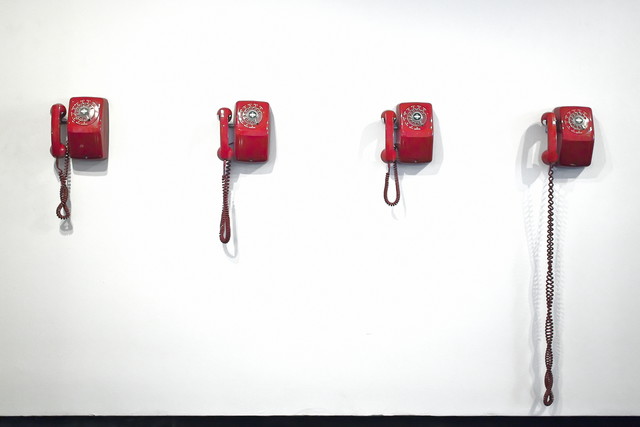Jeff Seltzer’s photography is an extremely thoughtful take on the effect of human occupation within the landscape of contemporary environments. He explores the anonymous, sometimes featureless structures that have been created by people, but the photography itself excludes any interaction with humans or movement. Jeff Seltzer has made a point to document our everyday modern urban landscape, an often too hectic place to notice. He has an excellent eye for composition, colour and finding a loneliness in the landscape. His portrayal of these landscapes become almost abstract, with beautiful linear observations and a selective colour consideration.
How do you feel inspired?
I’m inspired by the love of photography, and the ability for photography to serve as creative expression. The process of taking pictures is therapeutic for me, and it’s what I love the most about photography – that is, the process is more important than the final image. I like discovering a scene (often one that most people simply walk by), framing the image, dialing in the proper exposure, and then processing the image in the “digital darkroom.” That process is what I enjoy most and the effect it has on me serves as inspiration.
How did you begin to notice these austere landscapes as interesting photographic material?
How did I begin to notice these landscapes? That’s a tough question. I think that I started to notice and appreciate the work of others (e.g., Bob O’Connor). So, I was inspired by others and then began to consciously look for these kinds of scenes. At first, there was a lot of experimentation and trial & error as to what works. Once I discovered what works, you begin to see more and more of the scenes because you are more aware. It’s like how you do NOT notice ambient noise (birds, planes, etc.). But, if I said to you “listen specifically for birds” you’d instantly notice them. But, ultimately, it’s hard to say. I guess my brain is just wired to notice these scenes. My formal education is more scientific – statistics, experimental design, and rhetorical theory. These topics require a sense of order, and that’s what I look for in my scenes – a sense of order.
When you go on one of your travels, what do you take with you? Why?
Since I have only one camera, that’s the one I travel with! Currently, I shoot with the Fuji X-T1. It meets all of my requirements sated in the first question. At most, I’ll take 2 or 3 lenses; most of the time, I take only one. If I take just one, it’s either the excellent Fuji 23mm or the excellent, and versatile 55-18mm. If I travelling with family, I’ll also pack either the 56mm or 35mm.
Tell me a little something about your background and why you picked up the camera.
I really started getting into photography when my first daughter was born – so that was about 10 years ago. I’ve always been artistic, but I was never very good with any other medium (e.g., paint). I’ve also always been into computers and tech gadgets. So working with DSLR was a natural fit for me – it allowed me to express my creativity, and also gave me plenty to play with in terms of computers/tech.
The colour in your photography has a huge impact on the photograph, do you think it has a large part to play when choosing compostitions?
Yes, colour is an important part. And, yes, it absolutely has a lot to do with how I notice and choose scenes and composition. I learned that color can play not just an important, but a central role in my images. I’ve always been drawn to strong, bold, primary colours. So, when I notice them, I stop and look for a possible composition. The “Parking” image is a good example – it was that orange cone that I noticed and I started to build an image around it.
Among your works, which one is your favorite? Why?
Haha! That’s like picking my favorite daughter! I have several favorites. But, three that immediately come to mind are “Parking,” “Tree, Airport, and Shadow,” and “Airport Chairs.” These images strongly exemplify my photographic philosophy of Harmony – beauty in simplicity. They are examples of scenes that are un-noticed every day, but were compelling to me. People tell me, that while the images are relatively simple, they can look at them for a long time – and that’s the sign of a successful image. They also use color and composition in a strong way, which is important to me (and seems less important to other photographers these days!).
Whose work has influenced you most?
There are several photographers that I really like, and have clearly influenced me: Brad Moore, Douglas Ljungkvist, Bob O’Connor, and Josef Hoflehner are a few that come to mind.
What is the one thing you wish you knew before you started taking photos?
That’s a hard question! There have been learning curves when it comes to all aspects of photography including equipment, composition, and processing. There’s also been a lot to learn in terms of the importance of developing a personal style, sales, marketing, and positioning my work. Sure, I could say that I wish I knew some of this stuff before, but I don’t – the discovery and learning (the journey) is the part that I really love. So, the simple answer to your question is: nothing.
Visit Jeff’s website, or buy his beautiful photography on Photocircle while also donating to a development project.

